|
This past year, my students took on the largest film project ever attempted at JWMS. Jebari, one of my 8th grade video production students, wrote a really wonderful script about a boy whose parents are getting a divorce; the boy decides to get creative and seek lost treasure in order to solve his parents’ financial woes and save their marriage. Where does one find a sunken pirate ship and lost treasure in the middle of the southern California desert? At the Salton Sea, located at the eastern end of the Coachella Valley. Based partially on local lore, Jebari cobbled his script together from various versions of the legend of the lost ship and his own creative ideas. When Jebari came to me with his project idea, I was immediately supportive because my favorite answer to give students is, “Yes!” I thought his idea was original and the script had the potential to make an emotional impact as well. Jebari wanted to cast the movie with AV Club students and utilize video production classmates to round out his crew. All of it - the story, the performances, and the potential success of the project hinged on filming on location. Though my students currently have access to a green screen and three-point lighting, Jebari and I talked at length about how much we needed to be able to film off campus. Enter DigiCom Productions and two of the producers of the Palm Springs Unified DigiCom Film Festival, David Vogel and Dr. Lee Grafton. They graciously read Jebari’s script and decided to fund almost $1,000 of travel expenses for my students to be able to plan and execute two days of on location filming. We filmed at two different sites: the Salton Sea and a residential neighborhood in Indio. (Our school is located in Cathedral City, at the west end of the Coachella Valley.) Here’s a look behind the scenes of “Lost Ships”... Lessons Learned During Production Throughout the production of “Lost Ships,” my students and I learned two big lessons. The first realization we reached is that movies are made in the editing room. The first cut of “Lost Ships” was over twenty minutes in length; the second cut didn’t get much better and sat at a solid sixteen minutes in length for the better part of a week as we scratched our heads and tried to figure out how to condense the storyline. After several more cuts and many hours, Jebari and his assistant directors and editors adopted a non-linear approach to the storytelling of “Lost Ships.” It wasn’t until we all agreed to throw the script out and create the best story from the footage we had that my students struck gold. The second lesson we learned involves some ideas about filming on location: You will always need to do a reshoot. Before filming on location, my students drew extensive storyboards, tirelessly rehearsed their script, planned to accommodate for lighting changes throughout the day, and even then, they needed to do a reshoot. No matter how prepared you are going into it, there will always be elements out of your control, unforeseen complications, and moments during post-production when you think, “If we only had a shot of _______.” Hence, having the opportunity to revisit locations is crucial to creating the best product possible. Here is what Jebari had to say about filming on location: “Filming on location is scary and fun because it’s a new atmosphere. However, you have to make sure you can get all the footage you need while you’re there. Actors should prepare by knowing their scripts and the crew needs to manage equipment efficiently. Take everything with you - props, tripods, extra cameras, batteries. If you’re filming in full sun, umbrellas are helpful. Bring your storyboards and don’t forget to look at them consistently, but be open to new ideas for shots since you don’t know what your location will be like before you get there. There is always something to do, so don’t let people just sit around. Keep them motivated and focused on the mission - telling a great story.” - Jebari W. The Finished Product: "Lost Ships" Students worked for over five months to produce "Lost Ships" from beginning to end. Their dedication and passion for this project really paid off, as demonstrated in their final product... The cast and crew of “Lost Ships” were recognized recently at the California Student Media Festival as “Lost Ships” won an award for “Best Storytelling.” Students were also staggered to learn that in a little over a week, “Lost Ships” will premiere at the Palm Springs International Short Film Fest as part of the DigiCom Best of Fest Student Showcase! Also, Jebari and another student from my video production class, Gina, will receive all access filmmaker’s passes at Fest to be able to interact with adult filmmakers from around the world…wow! Since Jebari is an 8th grader, he promoted to high school this past Thursday, as did two of the film's actors, Brent and Marissa. Having been their video production teacher for the last three years, I will be honest and admit that I had a couple of tearful moment in my classroom after all my kids left. Sometimes, there are groups of kids who have this incredible, beyond ordinary connection - with one another, with me, with the medium of digital storytelling. So, sometimes it’s hard to say goodbye. But I definitely know that these kids are destined for great things. I'm looking forward to seeing what they do in the future! Movie Poster for "Lost Ships" Premiere at Palm Springs International Short Fest
Designed by Larry Fulton
1 Comment
As we make the transition to Common Core, I am encouraged by many of the conversations I have been having with teachers - both at my site, and beyond. Whereas prior to CCSS many said they didn't "have time to integrate technology," I am now beginning to hear much more encouraging statements, things like - "Hey. You know that Google Docs thing? Show me." The #EdTechGeek in me is turning cartwheels and leaping over tall building to be able to share the power of GAFE, of giving students choice, of allowing them to create instead of consume. That's some pretty awesome trickle-down tech usage, and for the most part I am encouraged by the willingness of other professionals to try new things. But there is one conversational tack that is driving me nuts: "Hey. Common Core testing means that we should bring back keyboarding classes. Let's get right on that!" This is how I feel when someone makes this suggestion: Let's be clear: Keyboarding classes are NOT a silver bullet that will magically transfer students into digitally literate learners who are prepared to face the Common Core test. The conversation really needs to be about how our instruction needs to change, across grade levels, in all departments. To me, Common Core is not about examining what we can add on the existing system in order to make it compliant. Common Core is about thinking outside of the box, and getting our students to think outside of the box. It's about reviving what's best in terms of our pedagogical options and saying goodbye to the worst. Shouldn't we be making instructional decisions based on what's best for kids? Shouldn't the conversation center around how to meet CCSS by redesigning the way we offer students learning opportunities in class? Shouldn't we consider the SAMR model and decide what it will take to reach a level of redefinition? Shouldn't we be bringing back Project-Based Learning, planning for inquiry, and taking a constructivist approach to learning? Instead, I often find that the CCSS transition often gets boiled down to keyboarding. Predictably, at the secondary level the blame then gets shifted to elementary teachers for not providing vital keyboarding skills, and before you know it - professional inertia is reached. When the best suggestion we've got is to reinstate keyboarding classes, that is a suggestion motivated out of fear. Yes, it's scary to take the practice tests on Smarter Balanced and realize that kids have instructional needs that aren't being met. Yes, Common Core will require systemic change across content areas - which for some folks will be more painful than for others. But how can we be indignant when students lack typing skills if we never integrate technology into the core curriculum? That is like being surprised when you try the same thing over and over and keep getting the same results. Albert Einstein once said, "We cannot solve our problems with the same thinking we used to create them." The visionary passion around which I have designed my classroom - everything from the physical arrangement, to the climate, to the learning activities, to the tech - is to help prepare my students for their future. I want to enable them to create their own goals and dreams, then equip them with the skill set that will enable fruition. In Room 208, we use iPads and Chromebooks daily and we allow BYOD for students who would like to use their own device with school wifi. My students close read in eBackpack and Google Docs, then create movies, record podcasts, screencast their thinking, design digital posters, use evidence to support their conclusions, and write like investigative reporters. None of that was accomplished with a keyboarding class. If a school site has limited technology resources, then it becomes even more important to use those resources in core classes, as opposed to reserving them in a lab setting for the express purpose of teaching keyboarding. For a school like mine, which services 1,500 students and is approaching a 2:1 student/device ratio, there are definitely better options than reserving technology to teach a keyboarding class. What is your school doing to prepare for Common Core? What do you think about how students develop keyboarding skills? Share your thoughts below or continue the conversation on Twitter: @Packwoman208. 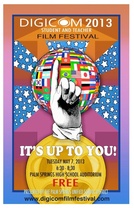 There is little that I love more than sitting in the audience at a film festival, watching my students as they see their work appear on the big screen. By the time we end up at the festival, we've all seen the movie countless times during the editing and revision process. Most of us can quote the dialogue word for word and we know every transition and special effect by heart. So, when we're sitting there in a darkened auditorium, I don't take time to watch the film as it rolls across the screen; for me, it's a far more powerful experience to watch the expressions on my students' faces as they are overwhelmed by pride and a deep sense of accomplishment. It's a thrilling experience - whether it's their first time at a film festival or what feels like their billionth. Their smiles are always huge, their eyes always shining, and in those moments, I know exactly why I am a teacher and why I choose to include digital storytelling in the curriculum. Connecting with students through the medium of film is one of the aspects of teaching that I am most passionate about. We take film making very seriously in Room 208, probably because there is no shortage of inspiration to be found in each other and the process of learning. Sometimes it seems like the world readily discounts what middle school students might have to say because, yes, middle schoolers can be immature, squirrelly, and obnoxious. But they can also be serious, ambitious, humorous, and even poignant. Even after integrating student film making in the curriculum for six years, students can still amaze me with what they are able to produce. Last night, my students and I attended the 2013 DigiCom Student Film Festival. We had a blast watching both our own work and the work of other students. One of my students was awarded a video camera for directing the award-winning film, "Identity Crisis." Last year, he won a video camera for directing a film noir piece, "The Lady In Black" and editing the award-winning, "Spitball Love." He has been an active student in my video production class for the last two years and a member of the after school AV Club that I advise. Film making is his heart and it shows. I love knowing that we have been able to forge a teacher-student bond based on the creative process of film making. When he geeks out about a new script idea or a special effect he's working on, I geek out, too! It's awesome. Award-winning films from Room 208 that were shown at last night's DigiCom include: Also, The Desert Sun covered my students in two separate articles this past week:
Probably the icing on the cake at this year's festival was the classroom grant that I was awarded, consisting of four iPads and $4,000. What an amazing, unexpected blessing! Here's a video clip of the big moment that was captured by and posted on The Desert Sun. 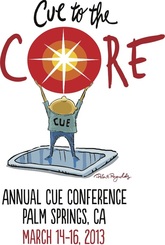 It never ceases to amaze me just how much good stuff is out there on the Internet, in terms of tech tools that are useful in the classroom. While attending #CUE13, my hands-down favorite session was called "Get SLAMMED with Google" presented by some pretty awesome Google Certified Educators. (Note: On the Educative Gradient of Awesome, these people are off-the-grid wowzers!) They had plenty of useful recommendations, tips, tricks, etc. - but what I really appreciated learning about was a neat little tool called Docs Story Builder. It is such a great find that I went straight back to my classroom the Monday after CUE and put it to work! What is Docs Story Builder? Docs Story Builder is a Google web app that allows users to create conversations in a simulated Google Docs collaborative environment. Check out this silly sample from the Docs Story Builder home page: Tell Me a Story: The Process To implement this brand-new-to-my-classroom tool, I gave my students a quickie tutorial that lasted about a minute, then gave them five minutes to mess around and explore. Because the interface is super easy to use, this was more than sufficient time and generated a lot of excitement. In case you're a fan of how-to videos, here's a brief tutorial, which is actually longer than the prep I gave my students: 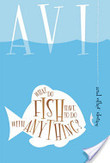 Docs Story Builder integrated seamlessly into Language Arts. Students had just finished reading the short story, "What Do Fish Have to Do With Anything?" by Avi. The focus for this reading selection was symbolism, but we also spent quite a bit of time talking about characterization. In the story, a boy named Willie asks his mother difficult questions about life and unhappiness after encountering a homeless man on the street. Students were able to engage in rich discussion because of the complexity of the content. To extend that interaction, I asked students to write a conversation between Willie and his mother, Mrs. Markham. Students had to stay true to the characterization of each as seen in the text, and include a text-based controversial statement made by the character of Mrs. Markham. Here are a few of the Docs Story Builder projects they created:
Reasons Why You Should Heart Docs Story Builder:
Have you used Docs Story Builder in your classroom? I'd love to hear what you asked your students to create - or better yet, see some examples! Comment on this post or hit me up on Twitter (@Packwoman208) to continue the conversation.
Happy Story Building! There is a feeling I get when a lesson is going well - you know the one, because you've felt it, too. It's similar to the way my stomach drops whenever I hear the opening strains of "Phantom of the Opera," or that moment just before I hurtle over the edge of the waterfall on Splash Mountain at Disneyland. What is that feeling? Excitement. Enthusiastic anticipation of a good thing. An excellent experience in the making. The act of teaching is the art of bringing many components together and orchestrating them into a meaningful whole: the student, engagement strategies, pedagogy, relevance, and authentic experiences. Teaching is like conducting; it's knowing when to let a single instrument play and when to let the whole symphony soar. Maybe that's how some teachers know when it's time to make a change - when the song becomes just another song and the notes are no longer special. There are so many moving parts to a good lesson, it can be difficult to harmonize them all. As teachers, we have to foster in ourselves a keen sense of timing and what it means to facilitate, as opposed to direct. While effective direct instruction is not a bad thing, the lessons that I (and my students) enjoy the most are those which allow autonomy and encourage investigation. No matter what we do, technology is almost always a main component. At my school site, I am responsible for training others about Common Core State Standards as California transitions to the CCSS over the next several years. I've begun piloting Common Core ELA lessons in my classroom and last week I decided to test drive a Common Core lesson plan that I wrote for Social Studies. In the end, the week long lesson proved to be a veritable symphony of project-based learning, iTunes U, and collaboration. The standards I decided to address were a blend of my content area standards and the CCSS Literacy Standards for Social Studies, History, Science, and Technical Subjects. Here's a breakdown: Social Studies Standard 6.5.4: Outline the social structure of the caste system. Inquiry based learning lends itself very well to Common Core, so I decided to take a PBL approach to this lesson. To provide structure, iTunes U seemed perfect. It only took me several hours to construct a course on Ancient India's Caste System. (Go ahead - subscribe to it!) The most difficult part was compiling a list of resources for students to use during the inquiry process. Here's a screen cap of the materials in the course (click to enlarge): Because my students are piloting a student-centered BYOD program, I asked them to download the free iTunes Uapp ahead of time. In class, I showed them how to search for my course in the catalog and subscribe to access content. Since students are already used to working in collaborative groups, I was able to quickly walk them through the interface of the iTunes U course I made and then set them free. Students did an incredible job utilizing the course to help walk them through the PBL process: developing an inquiry plan, creating a reasonable schedule, conducting research, compiling notes, and creating a product to demonstrate their learning. The duration of the project was an hour per day for five consecutive days, and the essential question under investigation was, "How was ancient Indian society organized and how does it compare to our society here in the United States?" Check out this video clip of my students. This is around the time that I started getting that insanely wonderful feeling of a successful lesson in progress: During the final stage of the lesson, kids were able to choose how they wanted to showcase their learning. I gave them several app suggestions, but students were free to use other apps if they felt they could accomplish the task given (click to enlarge): And these are a few of the fantastic products that students were able to create: ecause having an authentic audience is important, student projects were uploaded to our classroom website and shared via QR Codes in our school's main hallway, as well as on a bulletin board in our classroom. At the end of the week, my students felt proud of themselves, the choices they made, and the work they accomplished.
There's a feeling I get, when a lesson went well - you know the one, because you've felt it, too. Success. If you have questions about the process I used or any aspect of this post, please feel free to leave a comment. On this past Monday, one of my former students stopped by my classroom. I always love to reconnect with students who have moved on to 7th and 8th grade, and I love hearing how their lives are changing, what they’re up to, and how their families are doing. Occasionally, I’ll run into students who have graduated from high school and I’ll see them behind the counter at Starbucks. It can be a little strange to see kids who are so much older than the last time I saw them, but somehow I’ve always been able to remember their names – it’s a weird talent. Anyway, this one kid, who’s now taller than I am, popped his head into my classroom after school last Monday and said, “Yo, Mrs. Pack. You still using iPads like a rockstar? I got a question.” For those who may not know, Urban Dictionary defines the phrase “like a rockstar” as an adjective that means, “to do something well – be it musical or not. Example: She can knit like a rockstar.” The thing is, I’ve always wanted to be a rockstar but have no musical talent whatsoever, so it’s sort of a relief to know that I can be rockstar-like while doing other things that I am actually good at. There are a ton of video tutorials on YouTube that attempt to teach people to do a number of tasks like a rockstar. For example, check out this tutorial that teaches you how to pack a suitcase like a rockstar: I think one of the ways you know you can use iPads and other iOS devices like a rockstar is when you begin to author your own content. Thanks to the advent of iBooks Author, writing my own book feels like delivering a soaring guitar solo to a sold-out stadium. Publishing a course on iTunes U and using my book as a multimedia source feels like jamming next to Springsteen, Steven Tyler, and Mick Jagger. In light of that, here are a few tips on how to author content like a rockstar:
Download my book, Digital Storytelling: Connecting Standards to Movie-Making Subscribe to my iTunes U Course, Digital Storytelling: Film Challenges Being able to share what you do in your classroom and what you’re passionate about teaching kids is an amazing opportunity. Disseminating ideas has never been so easy. Between social networking and the incredible publishing tools of iBooks Author and iTunes U, teaching in isolation isn’t really a danger for a tech saavy teacher. If you haven’t yet started publishing your own content – what are you waiting for?! Download iBooks Author on your Macbook, sign up for an iTunes U instructor account (or check with your district to see if they have an account you can be affiliated with), and start authoring like a rockstar. You can do it! Questions? Want to know how it’s done? Comment on this post or email [email protected]. By Jessica Pack
Follow Me on Twitter @Packwoman208 One of the most persistent reasons that I hear for why some teachers choose NOT to implement mobile technology is that whatever task they are asking students to do can be done using more traditional methods. As one colleague casually mentioned to me recently, “The iPad isn’t offering anything that I can’t have my students do using a pencil and paper.” 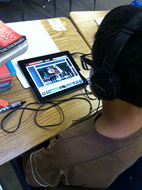 While my immediate impulse was to counter this comment with a dozen different arguments for why mobile technology is an incredible classroom tool, I realized that I wasn’t talking to someone who is living in the teaching dark ages. More often than not, the teachers who have made such remarks to me are actually pretty adept at using technology for instructional purposes in their classroom. They are often dynamic, engaging individuals with a charisma that students find irresistible. For all intents and purposes, these teachers are on the top of their game. The fact that their technology integration is teacher-centered seems to be something they simply aren’t all that concerned about. I think, underlying it all, is an adherence to the age-old philosophy that says, “If it ain’t broke, don’t fix it.” On the surface, it’s tough to argue that these teachers should change the way they teach. They are already making an impact, engaging students, and imparting knowledge. These teachers are good at their jobs – probably excellent. However, the real issue isn’t whether teachers are successful at teaching, but rather if their students will be successful at whatever it is they want to do in life. When we integrate technology in the classroom and keep it student-centered, there are some powerful byproducts of learning that can’t be overlooked: 1. Information and Media Literacy. As the nation shifts toward Common Core standards, the instruction students receive will shift more toward building information literacy. With a plethora of sources available to them on the Internet, students need to be able to search effectively, discern credibility, and synthesize information. This is a “life skill” that can only be developed in students who are exposed to and interact with multiple sources in an Internet-based, media rich environment. Students need to be able to communicate in a variety of ways because our world grows more and more digitized each year. Can they express their point of view in a multimedia presentation? On film? In a podcast? By writing a persuasive blog post? Can they conduct a survey online, or collaborate with peers using cloud-based software? 2. Critical Thinking and Innovation. If we are supposed to train students to think deeply, ask the hard questions, explore to find solutions, and evaluate the opinions of others, then how can we do that if we only ever give our students the opportunity to think inside of a box that we build? 3. Engagement and Experience. Even if 90% of your classroom is engaged 90% of the time, there is an opportunity for improvement. Boost engagement to 100% and give students the option to learn, grow, discover, and create in the medium most natural to them – technology. We are teaching digital natives and we need to meet them on their own turf. Yes, technology will continue to change and grow, and in a few years we will probably have something even better than the iPad, but should we stop adapting our instruction in anticipation of the next big device? Should we stop investing money in educational technology to put in the hands of students because it will eventually become outdated? Of course not. Relevant experience builds on itself. During the last school year some of my students had never used an iPad before, but they had used a friend’s iPhone or iPod, so it wasn’t a big leap for them to make to use an iPad. Those leaps won’t be possible if we never invest in anything. In the end, the instructional decisions we make as teachers need to be based on what kind of people we are shaping students to become, not on whether the way we teach still works. Cross-posted on www.appsinclass.com
|
Author: Jessica PackCalifornia Teacher of the Year. CUE Outstanding Educator 2015. DIGICOM Learning Teacher Consultant. 6th Grade Teacher. Passionate about gamification, Minecraft, digital story-telling, and fostering student voices. Download:Archives
June 2020
Categories
All
|
||||||||||||
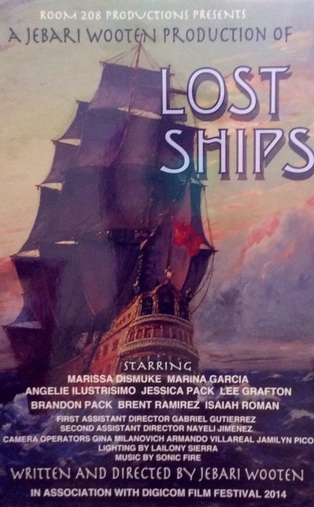

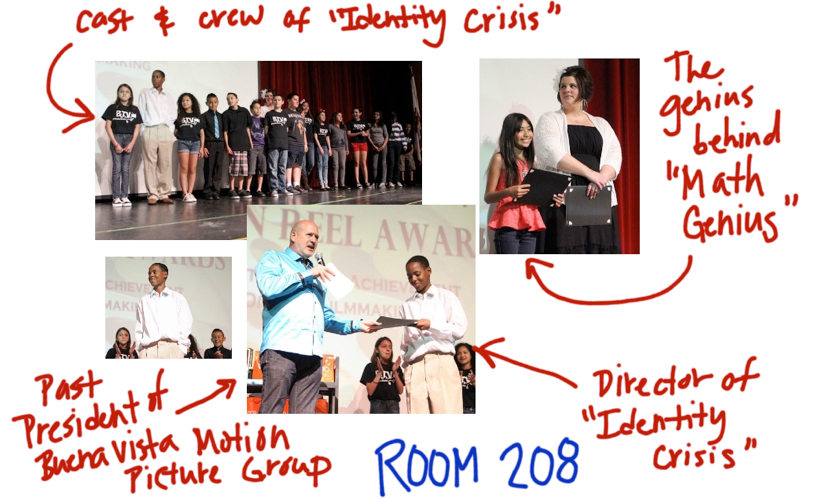
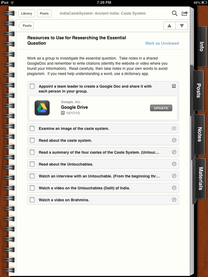
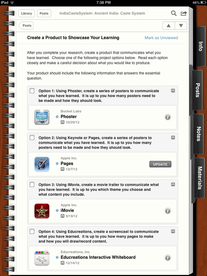
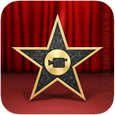
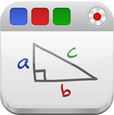

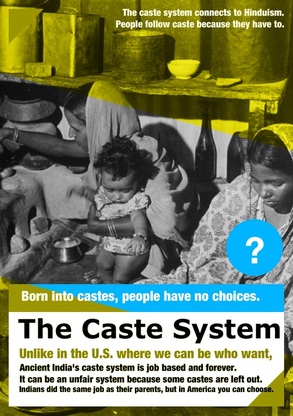
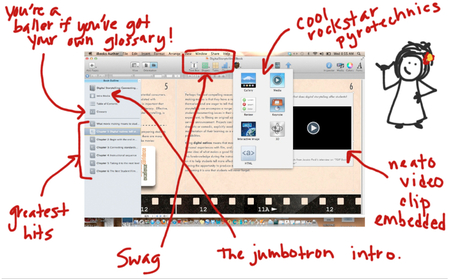
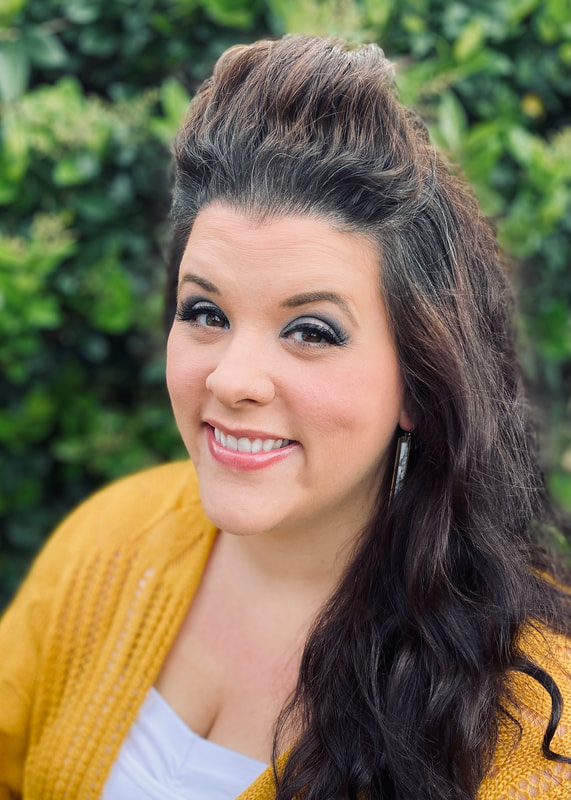
 RSS Feed
RSS Feed